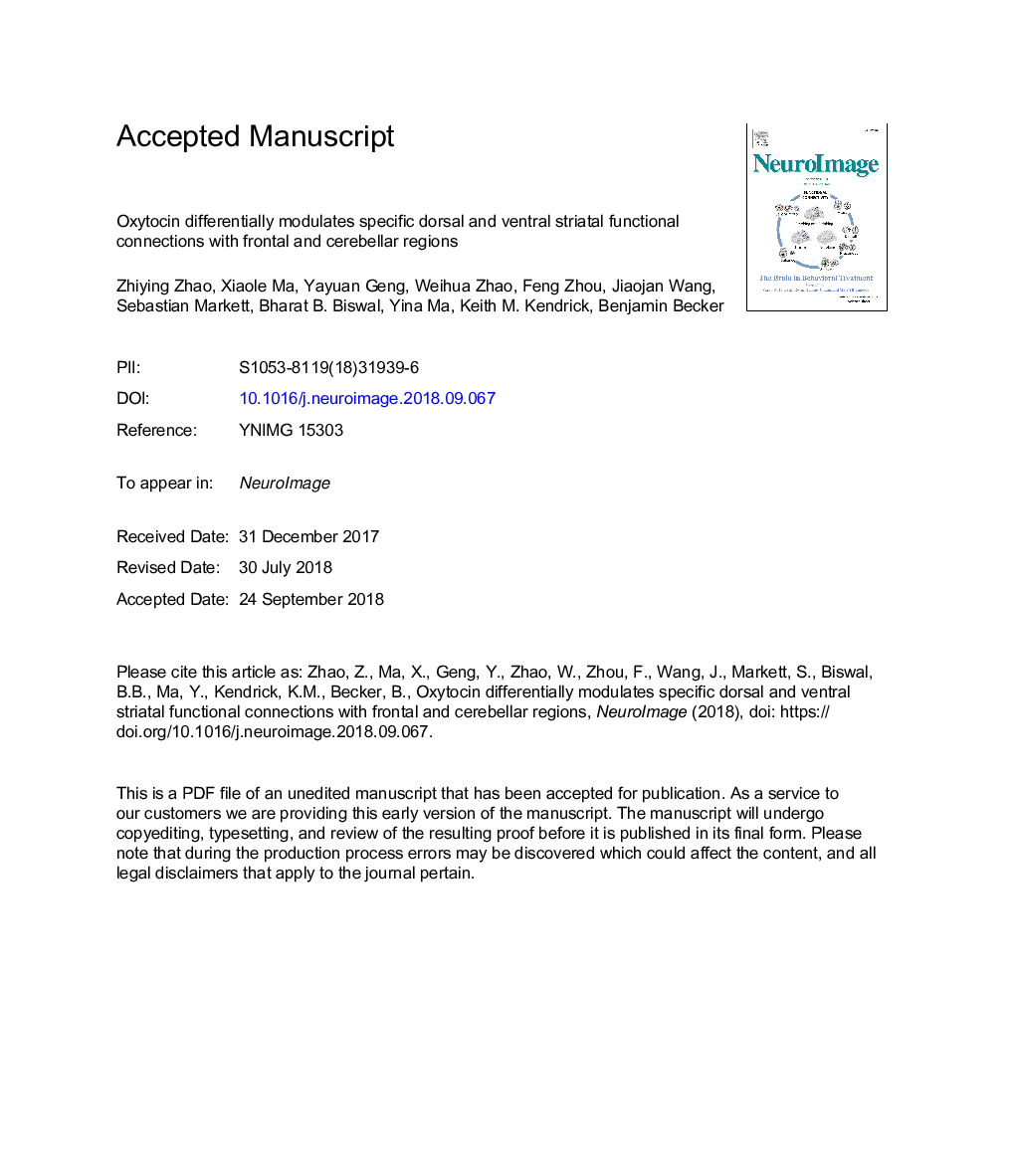| Article ID | Journal | Published Year | Pages | File Type |
|---|---|---|---|---|
| 11025532 | NeuroImage | 2019 | 40 Pages |
Abstract
Interactions between oxytocin and the basal ganglia are central in current overarching conceptualizations of its broad modulatory effects on behavior. Whereas evidence from animal models emphasizes the critical role of the ventral striatum in the behavioral effects of oxytocin, region-specific contributions of the basal ganglia have not been systematically explored in humans. The present study combined the randomized placebo-controlled administration of oxytocin versus placebo in healthy men (nâ¯=â¯144) with fMRI-based resting-state functional connectivity to determine the modulatory role of oxytocin on the major basal ganglia pathways. Oxytocin specifically increased connectivity between ventral striatal and pallidal nodes with upstream frontal regions, whereas it decreased the strengths of downstream pathways between the dorsal striatum and posterior cerebellum. These pathways have previously been implicated in salience, reward and behavioral flexibility, thus shaping goal-directed behavior. Given the importance of aberrant striatal intrinsic organization in autism, addiction and schizophrenia the present findings may suggest new mechanistic perspectives for the therapeutic potential of oxytocin in these disorders.
Related Topics
Life Sciences
Neuroscience
Cognitive Neuroscience
Authors
Zhiying Zhao, Xiaole Ma, Yayuan Geng, Weihua Zhao, Feng Zhou, Jiaojian Wang, Sebastian Markett, Bharat B. Biswal, Yina Ma, Keith M. Kendrick, Benjamin Becker,
